Are you looking to add some flavour and flair to your allotment or your home garden? Consider starting a herb garden with these herbs, known for their versatility, fragrance, and culinary delights. I will explore how herbs can complement other plants through companion planting and how companion planting is the basis for creating a food forest garden. Finally I will discuss the medicial benefit of my top five herbs.

Why Start a Herb Garden?
Starting a herb garden at home or in your allotment offers numerous benefits; Firstly, growing your own herbs ensures a fresh and readily available supply of culinary ingredients, enhancing the flavor and nutritional value of homemade meals. This self-sufficiency reduces reliance on shop-bought herbs, which may not always be as fresh or organically grown. The variety of herbs, such as basil, mint, and rosemary, can attract beneficial insects, promote biodiversity, and improve the overall health of your garden ecosystem. Furthermore, many herbs have medicinal properties and can be used in home remedies, contributing to a natural and holistic approach to health.
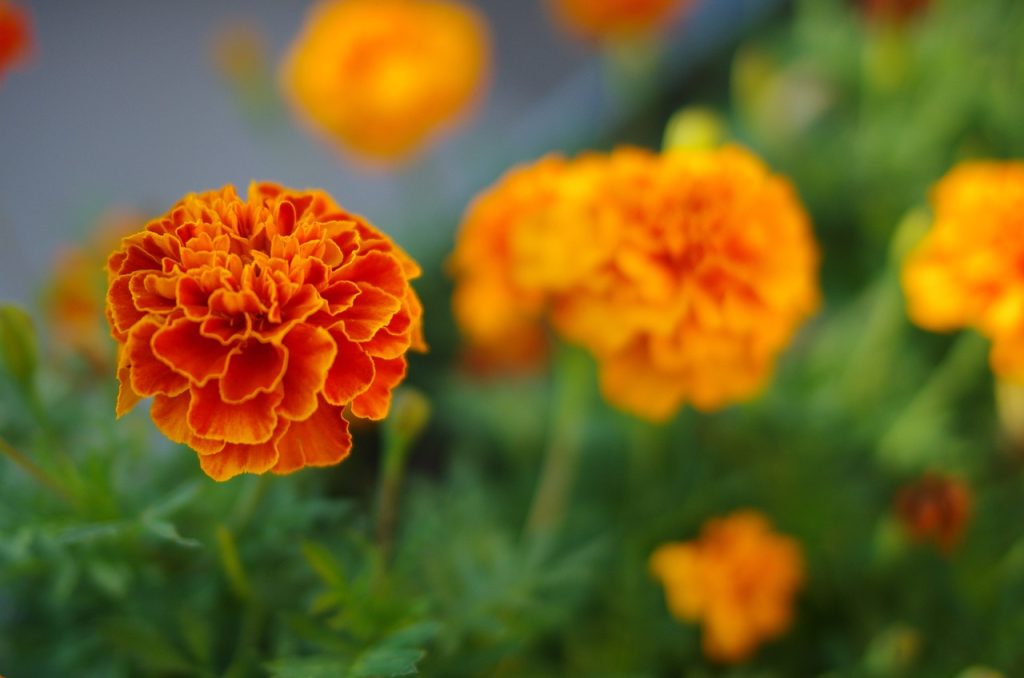
What is Companion Planting?
Companion planting is an agricultural technique where different plants are grown in close proximity to enhance each other’s growth and protect against pests. This method relies on the natural relationships between plants to create a healthier and more productive garden ecosystem. Certain plants, when grown together, can improve soil fertility, repel harmful insects, attract beneficial predators, and provide support or shade to their companions. For instance, planting basil alongside tomatoes can deter pests and enhance the tomatoes’ flavor, while beans fix nitrogen in the soil, benefiting neighboring plants that require nitrogen-rich soil. Additionally, marigolds are often planted with vegetables to repel nematodes and other harmful insects. By strategically choosing plant pairings, gardeners can reduce the need for chemical pesticides and fertilisers, promote biodiversity, and achieve a more sustainable and balanced garden environment.
Companion Planting and Food Forest Gardens
My overall vision for both my garden and my allotment are to create a food forest garden where we can have lots of fruit, vegatables, herbs and flowers growing together and helping each other. Food forests, also known as forest gardens, are sustainable agricultural systems designed to mimic natural forests by incorporating diverse layers of edible plants. These layers include tall trees, smaller trees, shrubs, herbs, ground cover, vines, and root crops, creating a self-sustaining ecosystem. Companion planting is a key principle in food forests, as it enhances biodiversity and the resilience of the garden. By strategically placing plants that benefit each other, food forests optimise space and resources while minimising pests and diseases. For example, nitrogen-fixing plants like clover or beans are interspersed with fruit trees to enrich the soil, while flowering plants attract pollinators and beneficial insects that control pests. This synergy among plants not only boosts productivity but also reduces the need for chemical inputs, fostering a balanced and regenerative growing environment. Ultimately, food forests embody the essence of companion planting on a larger scale, promoting ecological harmony and sustainable food production.
My Top Five Herbs for the Herb Garden
Rosemary:
Rosemary is a fragrant evergreen herb native to the Mediterranean region, commonly used in cooking to add flavor to a variety of dishes. This aromatic herb thrives in the UK climate and adds a delightful fragrance to your garden. Rosemary is excellent for companion planting with cabbage, carrots, and beans, as it deters pests like cabbage moths and bean beetles. Beyond its culinary uses, rosemary possesses several medicinal properties. It has been traditionally used to improve digestion, enhance memory, and boost overall cognitive function. Rosemary contains antioxidants and anti-inflammatory compounds, which can help protect the body from oxidative stress and inflammation. Additionally, its essential oil is often used in aromatherapy to reduce stress and improve mood.
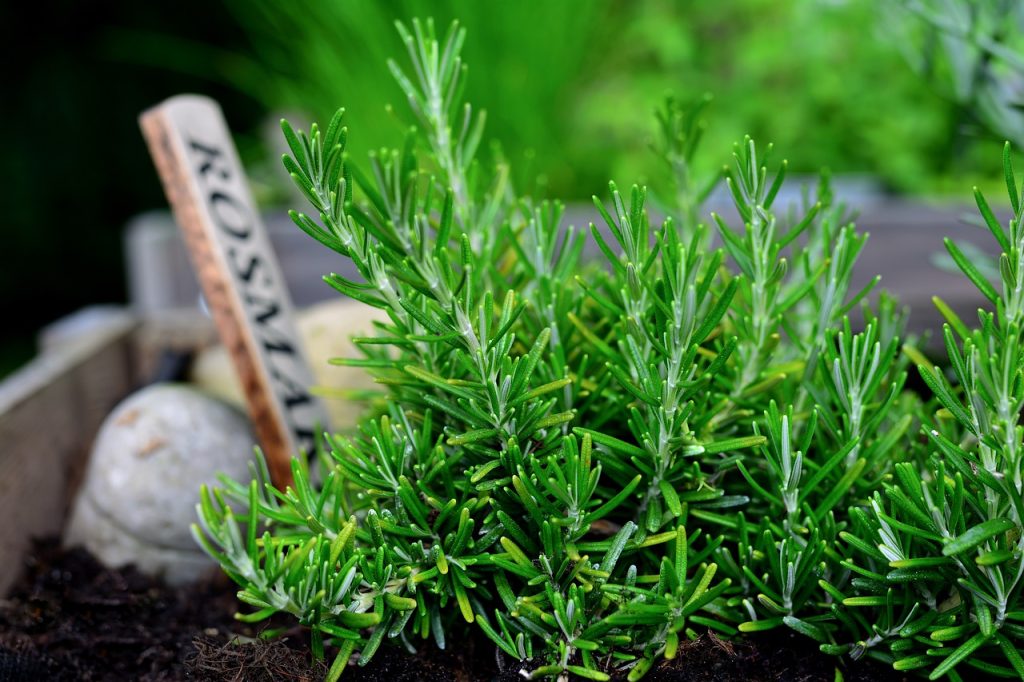
Thyme:
Thyme is a versatile herb known for its strong, earthy flavor, commonly used in cooking to enhance the taste of soups, stews, and meats. With its low-growing habit and delicate leaves, thyme is a versatile herb that’s perfect for edging paths or filling in gaps in your garden. It’s also a beneficial companion for tomatoes, repelling whiteflies and attracting beneficial insects like bees and butterflies. Medicinally, thyme has a rich history and is valued for its antiseptic, antifungal, and antibacterial properties. It contains thymol, a compound effective in combating respiratory issues such as coughs and bronchitis. Thyme is also used to support digestive health, reduce inflammation, and boost the immune system. Additionally, thyme’s essential oil is often employed in natural cleaning products and as a remedy for skin conditions due to its antimicrobial effects.
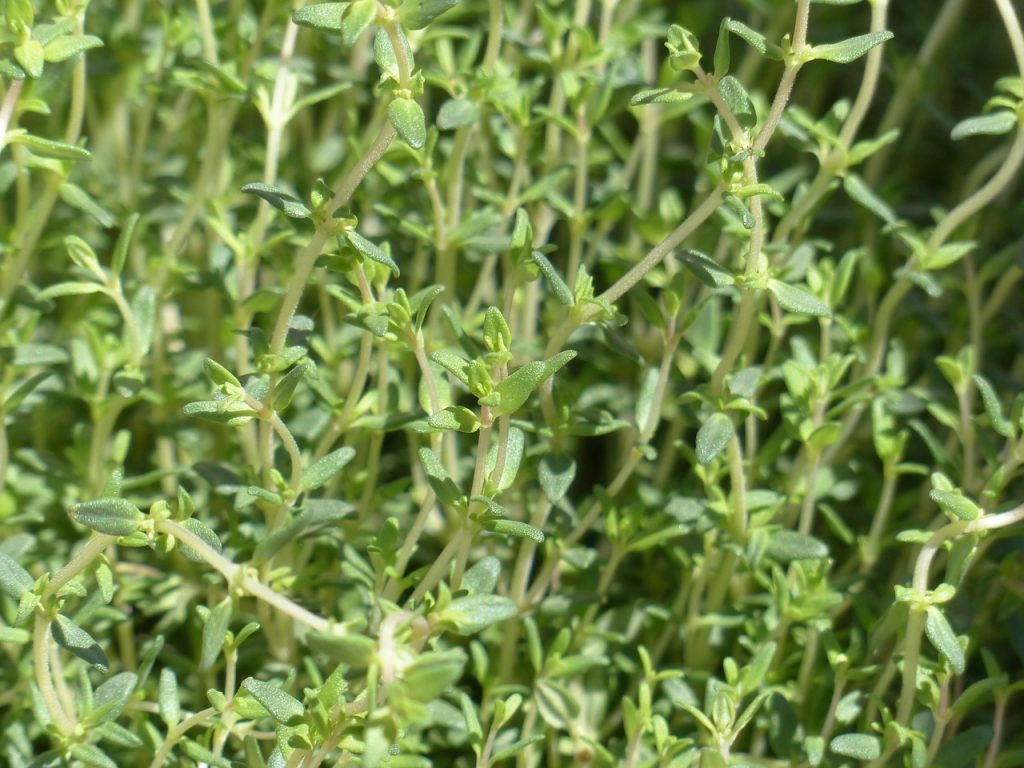
Mint:
Mint is a fast-growing herb that adds a refreshing zing to salads, drinks, and desserts. While it can be invasive, so keeping it in a container is advisable, planting mint near brassicas can deter pests like cabbage moths and flea beetles. Mint also boasts several medicinal properties. It is renowned for its ability to aid digestion, alleviate symptoms of irritable bowel syndrome (IBS), and reduce nausea. Mint also has anti-inflammatory and antimicrobial properties, making it effective in soothing minor skin irritations and freshening breath. Additionally, the menthol in mint is known for its decongestant and analgesic effects, providing relief from headaches and respiratory issues.
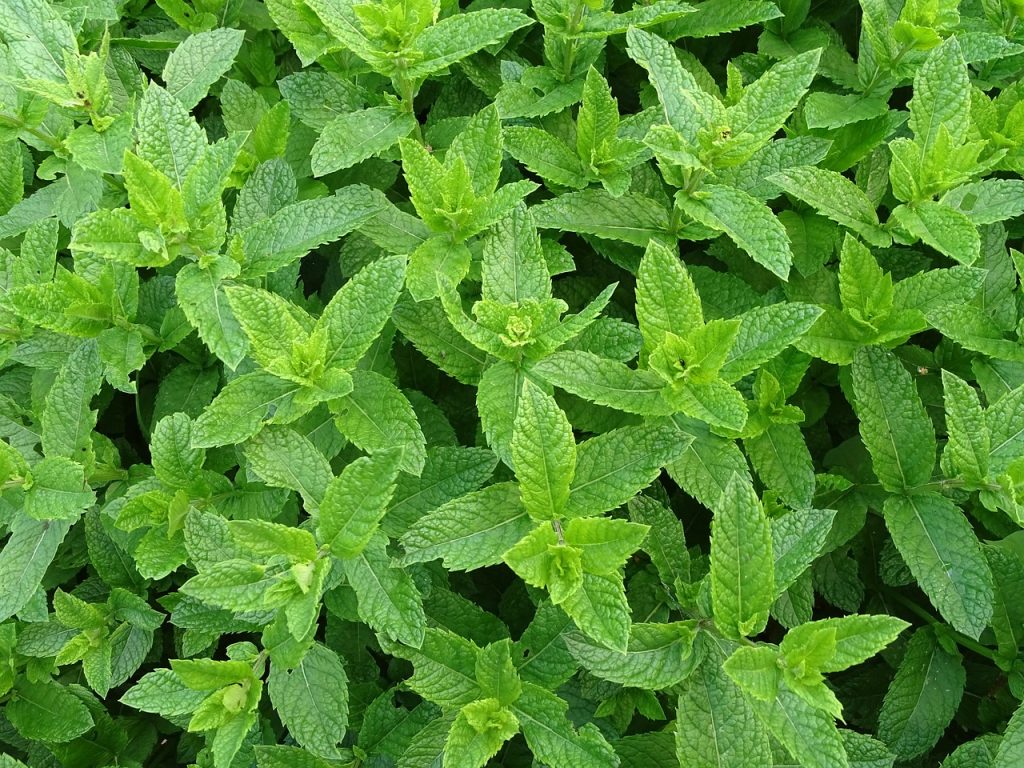
Sage:
Sage is a hardy perennial herb that adds a robust flavour to dishes, commonly used in cooking to season meats, sauces, and stuffing. Planting sage near brassicas like cabbage and broccoli can help repel pests like cabbage moths and aphids. Sage attracts pollinators with its vibrant blooms and has notable medicinal properties. It is known for its antioxidant and anti-inflammatory effects, which can support overall health and well-being. Sage has been traditionally used to improve digestion, reduce excessive sweating, and alleviate menopausal symptoms such as hot flashes. Additionally, sage contains compounds that may enhance cognitive function and memory, and its antimicrobial properties make it effective in treating sore throats and mouth infections when used as a gargle.
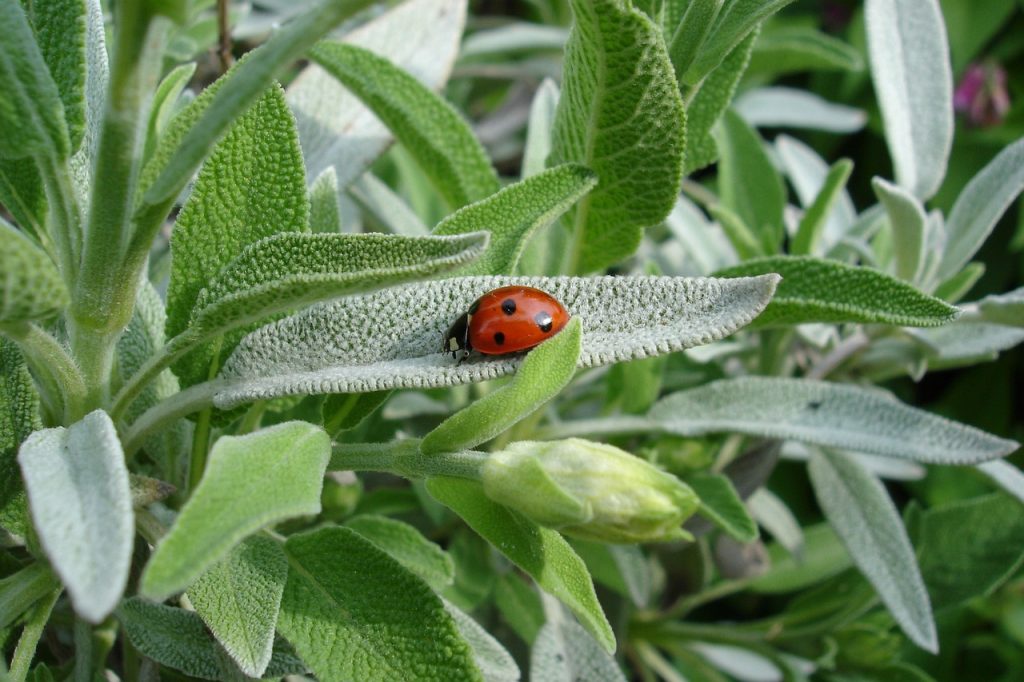
Parsley:
Parsley is a staple herb in many dishes, prized for its fresh flavour and nutritional benefits. It is a vibrant and versatile herb often used as a garnish or ingredient in a variety of dishes, such as soups, salads, and sauces, due to its fresh, slightly peppery taste. It’s also a beneficial companion for tomatoes and asparagus, enhancing their flavour and repelling harmful insects. Medicinally, parsley offers numerous health benefits. It is rich in vitamins A, C, and K, and contains powerful antioxidants that help reduce inflammation and support immune function. Parsley is also known for its diuretic properties, which can aid in detoxifying the body and promoting kidney health. Additionally, it has been used to improve digestion, freshen breath, and support bone health due to its high nutrient content.
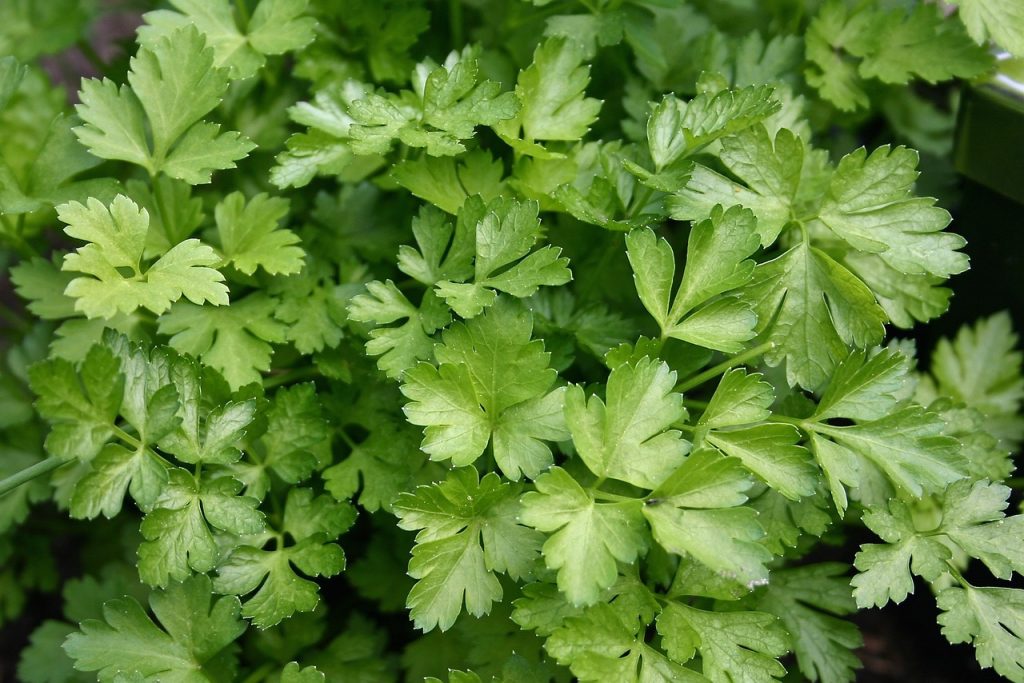
By incorporating these top 5 herbs into your allotment garden, you’ll not only enhance your cooking with fresh, homegrown flavours but create a vibrant and thriving ecosystem that supports biodiversity and natural pest control. So roll up your sleeves, grab your gardening gloves, and get ready to enjoy the bountiful benefits of growing herbs. Make sure you get the kids involved as starting a herb garden is a fun and easy activity for kids at the allotment. Let me know in the comments which herbs are your favourites.

I have just started using Tarragon. Got it from the shop but I could see it being useful to grow. Nice mild aniseed flavour.
Oh I will have to look into that Herb thanks Meg